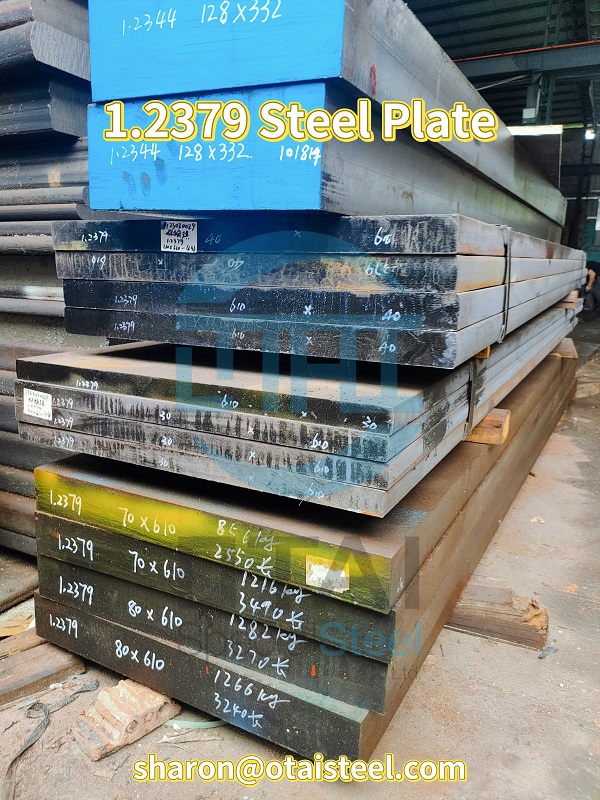When it comes to industrial materials, 1.2379 tool steel, especially in the form of steel plates with a thickness of 100mm or less, stands out as a versatile and invaluable choice. In this article, we’ll explore the diverse applications and various processing techniques of 1.2379 tool steel, shedding light on its essential role in multiple industries.
Understanding 1.2379 Tool Steel
-
An Introduction to 1.2379
1.2379, also known as D2 steel, is a high-carbon and high-chromium tool steel renowned for its outstanding wear resistance, toughness, and edge retention. These qualities have made it a preferred material for a multitude of applications.
Versatile Applications
-
1.2379 in Metalworking
One of the primary applications of 1.2379 tool steel is in the field of metalworking. Its exceptional hardness and wear resistance make it an ideal choice for cutting, shaping, and milling various metals.
-
Cold Work Tooling
Industries involved in cold work processes greatly benefit from 1.2379 steel. It is widely used in the production of cold working dies, punches, and shear blades due to its exceptional properties in low-temperature environments.
-
Forging Excellence
Even in high-temperature environments, 1.2379 tool steel remains robust. It plays a significant role in forging applications, where tools and dies must endure extreme heat and pressure.
Processing 1.2379 Tool Steel
-
The Significance of Heat Treatment
Heat treatment is a pivotal process in optimizing the properties of 1.2379 tool steel. It involves precise heating and cooling procedures to achieve the desired hardness and toughness.
-
Precision Grinding
Precision grinding is often employed to create sharp edges and fine finishes on tools and components made from 1.2379 steel. This process requires expertise and specialized equipment.
-
Annealing for Improved Workability
Annealing, a heat treatment process, is used to relieve internal stresses within the steel, making it easier to machine and work with.
-
Tempering for Enhanced Toughness
Tempering is a critical step after quenching, imparting the necessary toughness to the steel, preventing it from becoming brittle.
Advantages of 1.2379 Tool Steel
-
Exceptional Wear Resistance
Its high chromium content gives it outstanding wear resistance, extending the lifespan of tools and components.
-
Superior Edge Retention
Tools made from 1.2379 steel maintain sharp edges for extended periods, reducing the need for frequent resharpening.
-
Toughness
Despite its remarkable hardness, 1.2379 tool steel retains ample toughness, preventing it from chipping or breaking easily.
The Future of 1.2379 Tool Steel
-
Continual Advancements
Ongoing research and development efforts aim to further enhance the properties, making it even more versatile for a broader range of applications.
-
Environmental Considerations
Efforts are also being made to make the production and processing of 1.2379 steel more environmentally friendly, aligning with sustainability goals.
Conclusion
In conclusion, 1.2379 tool steel has established itself as an essential material choice in various industries, from metalworking to forging and beyond. Its exceptional combination of hardness, toughness, and wear resistance makes it indispensable. As technology and research progress, 1.2379 steel is poised to become even more versatile and environmentally conscious, contributing to a more efficient and sustainable future.











